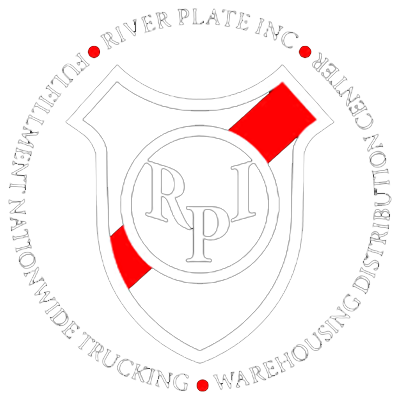What happens when a customer places an order online, but the item is out of stock?
Or when they expect two-day delivery, but the package arrives a week late?
These are everyday frustrations that can break trust and send customers straight to competitors.
Managing multiple sales channels—your website, marketplaces like Amazon, and even physical stores—comes with challenges. Inventory mismatches, slow fulfillment, and inefficient logistics can lead to unhappy customers and lost sales.
This is where omnichannel eCommerce fulfillment comes in. It connects all fulfillment channels into one seamless system and ensures orders are processed quickly and accurately—no matter where they come from.
In this article, you’ll learn:
- What omnichannel fulfillment is and why it’s crucial for your business.
- Key strategies and technologies to streamline fulfillment.
- Best practices for improving efficiency and customer satisfaction.
Let’s explore how businesses can get it right.
What Is Omnichannel eCommerce Fulfillment?
When a customer orders a product online, they expect it to arrive quickly and accurately, whether it ships from a warehouse, a physical store, or a third-party marketplace.
But what happens when different sales channels don’t communicate?
Inventory gets misplaced, orders are delayed, and customers lose trust.
This is where omnichannel eCommerce fulfillment comes in.
Unlike traditional fulfillment, which operates in separate silos (retail, online, or wholesale), omnichannel fulfillment connects all fulfillment channels into a single, seamless system. Whether a customer buys online and picks up in-store, orders from a TikTok Shop, or returns an item purchased on Amazon, everything is synced.
Businesses looking to stay ahead should learn why omnichannel fulfillment might be the future of retail strategy. As eCommerce evolves, integrating multiple fulfillment channels will be key to maintaining customer satisfaction and operational efficiency.
How Omnichannel Fulfillment Works in Modern eCommerce
Retailers now sell across multiple sales channels—their website, third-party marketplaces, and even social commerce platforms. To stay competitive, businesses must optimize their order fulfillment process by synchronizing inventory levels, warehouse management, and last-mile logistics.
A successful omnichannel fulfillment strategy requires:
- Real-time inventory visibility to prevent overselling.
- A warehouse management system (WMS) that tracks stock across locations.
- Flexible fulfillment options, like ship-from-store and BOPIS (Buy Online, Pick Up In-Store).
- Returns management that simplifies the process for customers.
Without these, businesses face frustrating challenges:
- Inventory mismatches that cause overselling or stockouts.
- Slow fulfillment operations, which lead to shipping delays.
- High fulfillment costs due to inefficient logistics.
- Poor customer service that damages loyalty and brand reputation.
To gain insights into ecommerce fulfillment trends shaping the industry, businesses should focus on automation, sustainability, and customer-driven logistics.
How River Plate Inc. Solves Omnichannel Fulfillment Challenges
Managing an omnichannel fulfillment model alone can be overwhelming. River Plate Inc. provides omnichannel fulfillment services that integrate warehouse management, inventory management, and logistics, which ensures a smooth fulfillment process.
Their fulfillment centers are strategically located and allow businesses to optimize shipping costs while simultaneously improving customer satisfaction.
With scalable fulfillment solutions, River Plate Inc. helps brands master omnichannel fulfillment without the operational headaches.
Next, we’ll break down the key components of an effective omnichannel fulfillment strategy.
Key Components of an Omnichannel Fulfillment Strategy
Omnichannel order fulfillment is more than just shipping products from point A to point B.
In fact, it’s more about creating a seamless, customer-first fulfillment operation that integrates inventory, order processing, and logistics across multiple sales channels.
When done right, it ensures fast delivery, accurate orders, and a superior customer experience—but achieving this level of efficiency requires a well-structured omnichannel strategy.
Here are the core components that make omnichannel fulfillment services successful.
1. Inventory Synchronization – Preventing Stockouts and Overselling
Retailers often struggle with inventory mismatches when selling across multiple sales channels like Amazon, Shopify, and physical stores. A disconnected system can lead to overselling, stockouts, and fulfillment delays—all of which damage customer trust.
Businesses can track inventory levels in real time by integrating an inventory management system with a warehouse management system (WMS), which ensures every fulfillment channel has accurate stock data. This level of inventory visibility is important for avoiding fulfillment issues and maintaining operational efficiency.
Example: A fashion brand sells through its website, an online marketplace, and a flagship store. Without real-time inventory tracking, they risk selling out online while still showing stock in their retail location. A centralized inventory system prevents this by syncing stock data across all channels.
To streamline warehousing and fulfillment for your business, make sure to leverage cloud-based inventory tracking and automation.
2. Order Management Systems (OMS) – Streamlining Fulfillment
Every online order should be processed efficiently, whether it comes from a direct-to-consumer (DTC) store, a third-party marketplace, or a retail location. A robust order management system (OMS) routes orders to the most optimal fulfillment center, which ensures fast and cost-effective delivery.
Why it matters:
- Reduces manual order processing errors.
- Automates order routing based on location, inventory availability, and shipping speed.
- Provides real-time order tracking that enhances the customer experience.
Retailers that lack an integrated OMS often face fulfillment bottlenecks, delayed shipments, and frustrated customers—especially during peak sales periods.
3. Flexible Fulfillment Options – Meeting Customer Expectations
Customers now expect multiple fulfillment options—convenience is no longer optional. A strong omnichannel approach includes:
- Ship-from-store: Uses retail locations as mini fulfillment centers to ship online orders faster.
- BOPIS (Buy Online, Pick Up In-Store): Allows customers to purchase online and pick up at a physical store.
- Curbside Pickup: An increasingly popular choice, especially for groceries and big-box retailers.
Example: A home goods retailer offering BOPIS and ship-from-store can fulfill online purchases faster and cheaper by using local inventory instead of shipping from a distant warehouse.
4. Warehouse and Logistics Integration – Building a Smarter Supply Chain
Coordinating multiple fulfillment centers, 3PL providers, and last-mile carriers is a complex task.
A streamlined omnichannel logistics network ensures:
- Faster order fulfillment by distributing inventory strategically.
- Lower shipping costs through optimized routing.
- Increased fulfillment efficiency, reducing operational delays.
A strong supply chain is essential for managing peak demand, preventing stockouts, and ensuring customers receive orders on time, every time.
5. Customer Experience Focus – Speed, Accuracy, and Hassle-Free Returns
A seamless fulfillment operation doesn’t end when an order is shipped.
Businesses must also prioritize:
- Fast shipping: Two-day or same-day delivery is now an expectation.
- Real-time tracking: Customers want visibility into their order status.
- Hassle-free returns management: A simple return process improves loyalty and repeat sales.
Without these elements, even a well-structured omnichannel fulfillment solution can result in negative customer experiences.
Benefits of Omnichannel Fulfillment
A seamless omnichannel fulfillment strategy isn’t solely about logistics
It’s more about customer satisfaction, business growth, and operational efficiency.
When businesses integrate multiple sales channels into a unified fulfillment network, they unlock several competitive advantages.
Here’s how an omnichannel approach can transform eCommerce fulfillment.
1. Improved Customer Satisfaction
Speed and reliability are non-negotiable. Today’s customers expect:
- Fast deliveries, often within two days or less.
- Real-time tracking to know exactly when their package will arrive.
- Seamless shopping experiences across channels—whether they buy online, pick up in-store, or return an item at a physical location.
Without an integrated fulfillment solution, customers may face delays, inventory stockouts, or inconsistent service, which may lead to frustration and lost loyalty.
A beauty brand using a multichannel fulfillment strategy can fulfill orders from the nearest fulfillment center rather than a single warehouse across the country, which reduces shipping time and costs.
2. Increased Sales and Revenue
A well-optimized fulfillment strategy leads to higher conversions and repeat purchases.
How?
- Faster, more reliable shipping reduces cart abandonment.
- Flexible fulfillment options like BOPIS and ship-from-store encourage impulse buying.
- Consistent fulfillment across digital commerce platforms strengthens brand reputation.
Retailers that fail to meet fulfillment expectations risk negative customer experiences—one delayed shipment can turn a loyal buyer into a lost sale.
To maintain efficiency and meet demand, businesses should explore common order fulfillment production strategies that optimize workflow and speed.
For example, a home goods retailer implementing omnichannel fulfillment services saw a 15% increase in repeat customers after reducing delivery times and optimizing returns management.
3. Operational Efficiency – Cutting Costs and Minimizing Errors
Fulfillment inefficiencies can eat away at profit margins. A centralized fulfillment network, powered by AI-driven automation, helps businesses:
- Reduce manual errors in order fulfillment processes.
- Improve inventory management through real-time visibility.
- Optimize warehouse space and labor, which cuts operational costs.
To reduce fulfillment costs and enhance logistics, consider five reasons to outsource eCommerce fulfillment instead of managing everything in-house.
Without automation, businesses struggle with misplaced inventory, shipping errors, and high fulfillment costs—challenges that quickly scale as order volume increases.
A fashion brand using automated inventory tracking and a warehouse management system (WMS) reduced stock discrepancies by 30% and successfully led to fewer fulfillment delays.
4. Scalability Without Heavy Investments
Scaling an eCommerce business shouldn’t require massive infrastructure investments. A strong omnichannel fulfillment model allows businesses to grow without:
- Building additional warehouses or fulfillment centers.
- Hiring a larger logistics team.
- Increasing fulfillment costs during seasonal peaks.
A scalable fulfillment operation ensures companies can handle growth—whether during holiday sales surges or international expansion—without disruptions.
A consumer electronics brand experiencing rapid eCommerce growth partnered with a 3PL fulfillment service to expand into new markets without adding warehouse overhead.
Challenges and How to Overcome Them
Omnichannel fulfillment comes with hurdles, from inventory tracking to logistics coordination. Without the right strategy, businesses face delays, overselling, and rising costs. Here’s how to tackle the biggest challenges.
Inventory Mismanagement
Selling across multiple channels makes it easy to oversell or run out of stock, which frustrates customers and losing sales.
A warehouse management system (WMS) provides real-time inventory visibility and prevents stock discrepancies.
Demand forecasting also helps businesses avoid excess stock or shortages.
Technology Integration
Disconnected systems slow down fulfillment, cause order errors, and increase costs.
A cloud-based fulfillment system syncs inventory, orders, and logistics in one platform.
River Plate Inc. offers seamless integrations that eliminate manual processes and improve efficiency.
Logistics Complexity
Last-mile delivery is expensive and unpredictable and often leads to delays and high shipping costs.
A multi-carrier strategy and regional fulfillment centers reduce transit times.
River Plate Inc.’s parcel and freight network optimizes shipping costs while improving delivery speed.
Returns Management
Complicated returns frustrate customers and increase operational losses.
An automated returns system with real-time tracking speeds up refunds and restocking.
River Plate Inc. streamlines the returns process and even improves customer satisfaction while also reducing revenue loss.
Best Practices for Implementing Omnichannel Fulfillment
A well-executed omnichannel fulfillment strategy ensures seamless operations, cost efficiency, and improved customer satisfaction.
Here are the key best practices for success.
1. Leverage Cloud-Based Fulfillment Technology
Integrating order management systems (OMS), warehouse management systems (WMS), and inventory tracking in one cloud-based platform enables real-time inventory visibility and automated order processing.
This eliminates stock discrepancies and enhances fulfillment efficiency.
2. Optimize Warehouse Operations
Use AI-driven forecasting and automation to streamline inventory allocation and reduce storage costs and fulfillment errors.
Automated picking, packing, and sorting processes speed up order fulfillment and improve accuracy.
3. Partner with a 3PL Provider
A third-party logistics (3PL) partner ensures scalable fulfillment operations and handles peak demand and logistics complexity without requiring major infrastructure investments.
River Plate Inc. provides end-to-end fulfillment solutions, which include customized logistics strategies, inventory management, and expert strategy support to help businesses scale efficiently.
4. Prioritize a Seamless Customer Experience
Offering multiple fulfillment options—such as BOPIS, curbside pickup, and ship-from-store—enhances customer convenience.
A well-structured returns management process further improves retention by ensuring quick and hassle-free returns.
Key Takeaways
Omnichannel fulfillment is essential for modern retail and ensures seamless operations across multiple sales channels while improving customer satisfaction.
Businesses that integrate real-time inventory management, cloud-based technology, and optimized logistics gain a competitive edge with faster fulfillment and lower costs.
To stay ahead, companies must assess their fulfillment strategy and consider partnering with a 3PL provider like River Plate Inc.
Our customized logistics solutions, expert strategy support, and scalable fulfillment services help businesses streamline operations and scale efficiently.
Ready to optimize your fulfillment strategy?
Request a quote from River Plate Inc. today.



